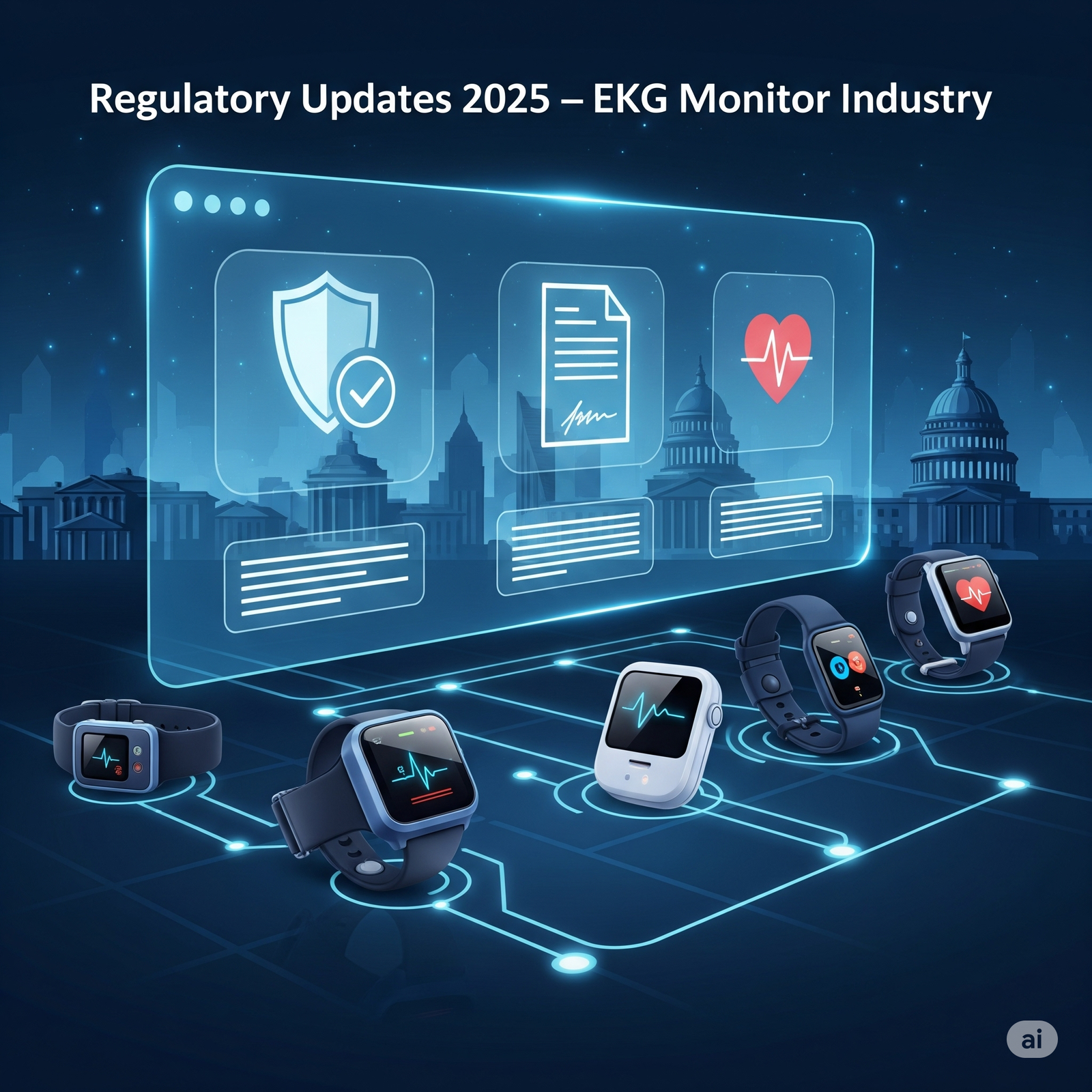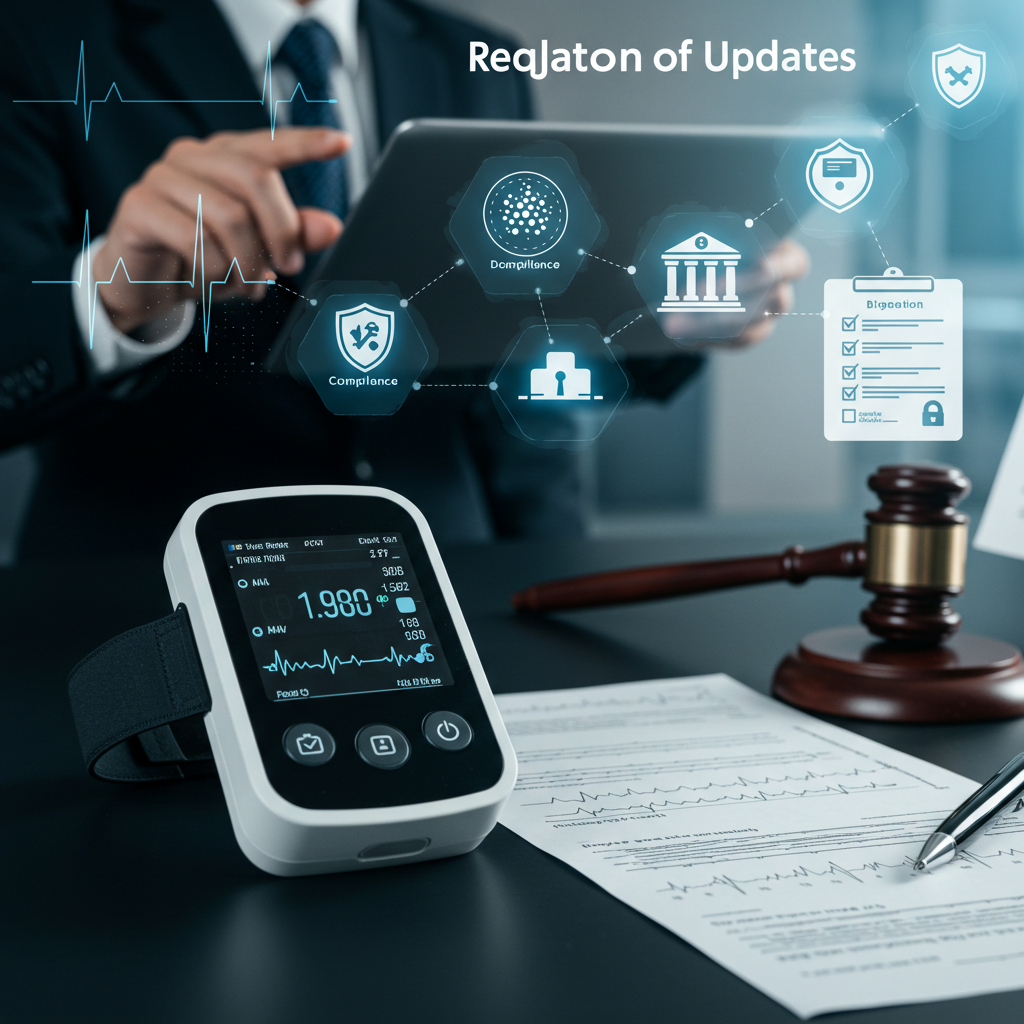Imagine being able to monitor your heart health from the comfort of your home; Personal EKG Monitors have made this a reality for many. But what happens when the rules governing these life-saving devices change? Recent regulatory updates from the U.S. The Food and Drug Administration (FDA) is reshaping how these cardiac monitors are designed, tested, and used.
These new regulations aim to enhance safety, improve device reliability, and ensure that patients get the most accurate readings possible. For manufacturers, this means navigating a more complex approval process, while users can expect higher standards and better performance from their devices.
Let’s explore why these changes are happening now and what they mean for the future.
Why the Regulatory Shift Now?
Since the pandemic, more people are using at-home health devices, especially to manage heart conditions. The FDA saw a need to tighten the rules on Personal EKG Monitors to ensure these devices work safely and correctly.
The new rules now require stronger proof that these devices, like a heart rate machine, are accurate and reliable. It’s all about improving the quality of care patients receive from home.
Now that we know why these changes were made, let’s look at how the devices are being reclassified.
What the New Classification Standards Include
The FDA has moved many Personal EKG Monitors from Class I (low risk) to Class II (moderate risk). This means these devices now have stricter requirements, such as:
- Submitting a Premarket Notification (510(k))
- Providing clinical testing data
- Tracking product performance after release
- Clear and accurate product labels
Even products like the ekg machine for home must now meet higher safety and performance standards.
This shift means companies must be more careful with product development and documentation.

ISO/IEC 80601-2-86: A Standard in Progress
Another major development is the upcoming ISO/IEC 80601-2-86 standard. Though still under development, this global standard aims to define basic safety and essential performance requirements for ECG telemedicine devices—including Personal EKG Monitors that transmit heart data remotely.
While it is not final, this standard is expected to focus on:
- Ensuring accurate data capture and transmission
- Strengthening patient data security and device connectivity
- Defining reliability benchmarks for remote monitoring environments
Manufacturers should begin aligning their design and testing practices with the expected requirements of ISO/IEC 80601-2-86 to stay ahead in both U.S. and international markets.
Let’s now look at the specific evidence manufacturers need to provide.

Clinical Data Requirements: What Manufacturers Must Prove:
To get approval from the FDA, companies must now test cardiac event monitor in clinical settings. These tests must show the device can:
- Accurately detect heart rhythm issues like arrhythmias
- Track heart function over time
- Protect patient data during online transmission.
This also affects products like the ecg heart rate monitor, ensuring they work as promised. The lack of this data could prevent a company from marketing their product.
Approval of a device doesn’t end the work. Let’s talk about ongoing monitoring.
Post-Market Surveillance: No Room for Complacency
After getting device approval, companies must continue to monitor how Personal EKG Monitors perform in the real world. The FDA now requires:
- Collecting user feedback
- Making software updates to fix problems
- Reporting any safety concerns or device recalls
Devices like the ecg monitor must show they’re safe and effective not just in the lab, but in daily use. That’s why companies need strong support systems to track product safety.
The next important area is how companies explain the device to users.
Patient Communication and Labeling Requirements
New rules also require clear instructions and labels for medical heart rate monitor. The FDA wants to make sure users understand how to use the device and what to expect. Companies must:
- Provide simple, easy-to-read instructions
- Warn about any errors or limitations
- Explain that the device is not a replacement for a doctor’s diagnosis
With clearer labels, users of tools like ekg machines can feel more confident using them safely. This is key for patients managing heart conditions at home.
Now, let’s see what these changes mean for patients.
What This Means for Telehealth and Remote Monitoring
The updated rules support telehealth by making sure Personal EKG Monitors are reliable. This helps doctors and patients share real-time heart data safely and effectively. Doctors can now:
- Monitor patients recovering from surgery
- Track long-term heart conditions
- Give advice quickly during virtual visits
Devices like the heart rate machine are now vital to connect patients and healthcare providers from a distance.
With better tools, however, come bigger responsibilities for the companies that make them.
What Manufacturers Need to Do Next
To follow the new FDA rules, companies making Personal EKG Monitors need to act fast. Here’s what they should do:
- Review current devices and update them if needed
- Run more clinical tests if data is missing
- Update labels and training materials
- Strengthen data protection systems
- Begin preparing for compliance with ISO/IEC 80601-2-86 once it is done.
Even simple devices like the ecg heart rate monitor must now meet these higher standards. If not, companies risk fines, product bans, or harm to their reputation.
Next, let’s talk about how these challenges can also be opportunities.
How the Industry Has Been Impacted
These regulatory changes have had a wide-reaching impact on the Personal EKG Monitors’ industry. Smaller companies have faced challenges in affording and navigating the 510(k) process, which demands clinical evidence and regulatory expertise. This has led to delays in product launches and higher development costs.
While larger manufacturers have invested more in research, regulatory staff, and post-market surveillance systems. They’ve used these changes as an opportunity to elevate their brand by showing higher reliability and safety.
This has also created a shift in the competitive landscape, with consolidation occurring as smaller players partner with bigger firms to meet the new FDA requirements. Innovation now requires both technical excellence and compliance foresight.
Staying Ahead of Compliance and Innovation
To stay competitive in the Personal EKG Monitors market, companies should:
- Sign up for FDA news updates
- Work with regulatory experts from the start
- Join FDA events and training programs
- Monitor the development of ISO/IEC 80601-2-86 and plan for early adoption
These actions help prepare for future rules and support smart product design. In the fast-moving world of medical tech, staying informed is key to staying successful.
Now let’s sum it all up and look at how you can take action.
The FDA’s new rules and standards for Personal EKG Monitors represent a major shift in the production and use of these devices. For patients, this means better quality and peace of mind. For companies, it’s a call to raise their standards.
Whether you use a heart monitoring device, these changes are not just about rules—they’re about shaping a safer, smarter future for heart health.
If you’re a medical professional, now’s the time to review your tools. Make sure your Personal ECG Monitors meet the new standards. If you’re a patient, ask your doctor if your device is up to date.. Your heart deserves the best care!


